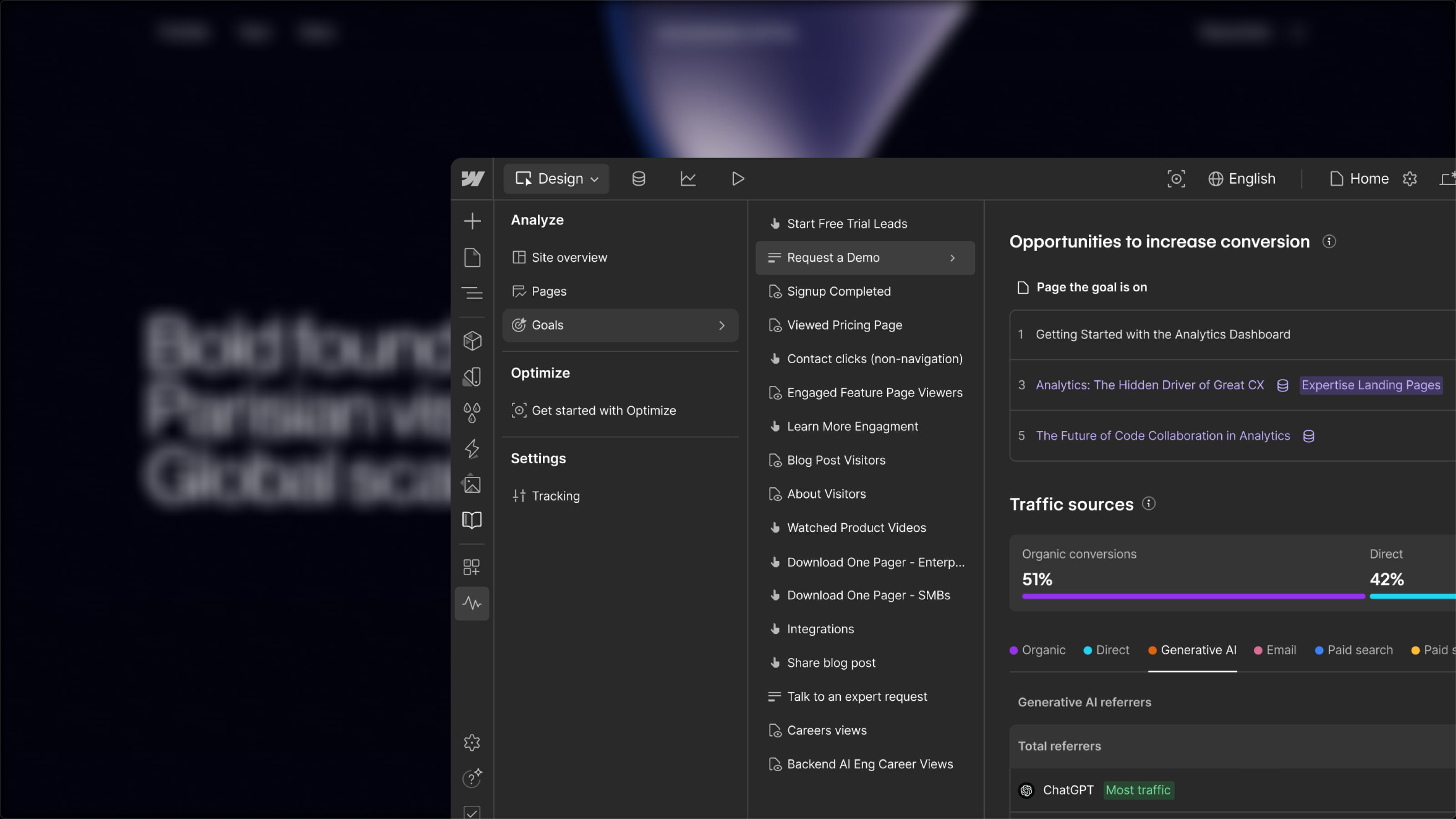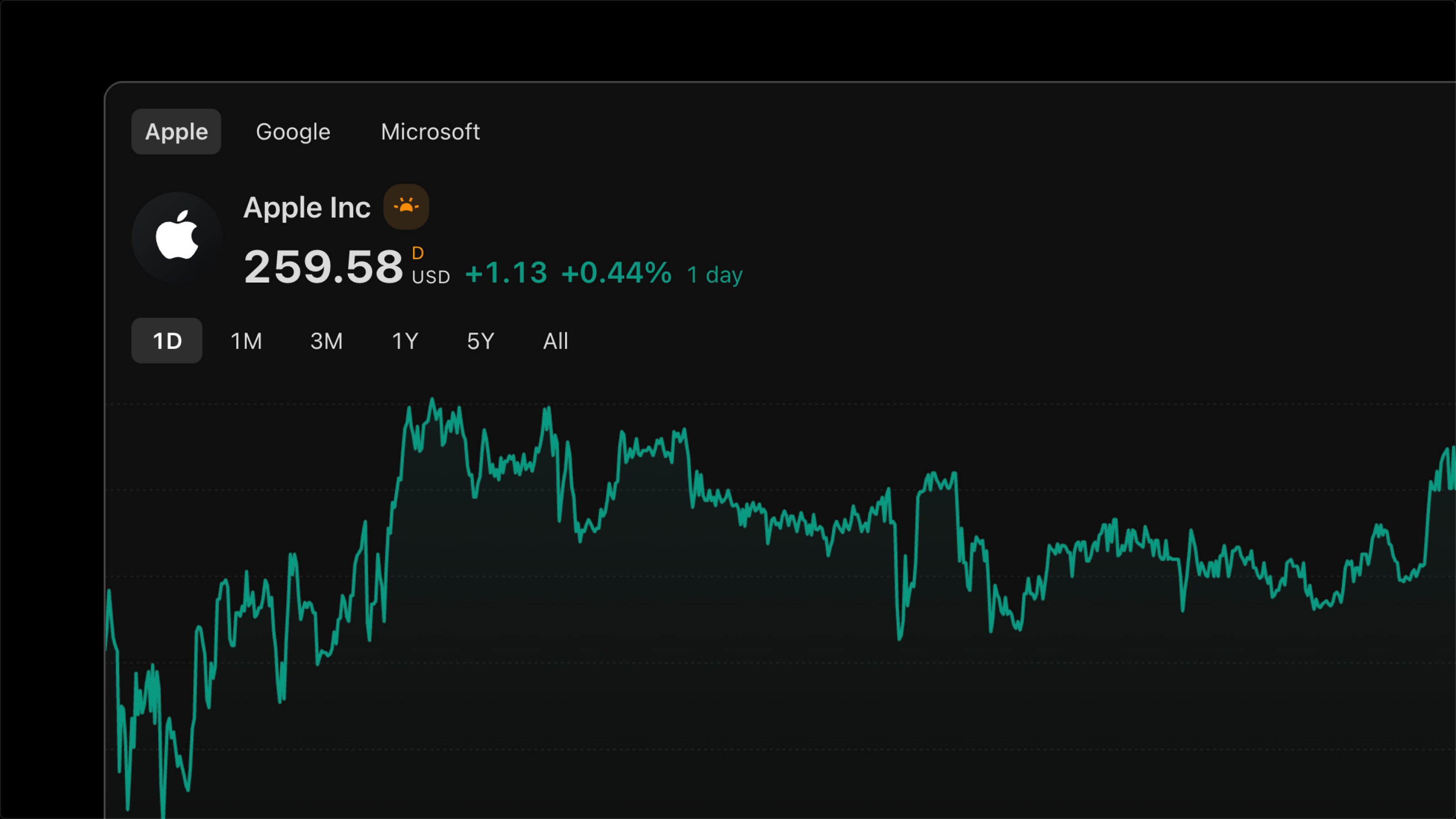For nearly 30 years, the website has been the primary gateway to online information—a place to search, compare, buy, etc. But that’s changing.
With the rise of conversational agents and language models, users are increasingly finding answers without even visiting a website. Sometimes, there's no need to click. Soon, there won’t even be a need to search—the agent will do it all.
So, a legitimate question arises: what role should the brand website still play? This article aims to answer—or at least explore—that question.
First, we’ll look at what’s changing in user behavior. Then we’ll explore how the website can reinvent itself around four strategic functions. Finally, we’ll imagine what websites might look like in 2030.
This talk was first presented in a breakfast event in Paris, in collaboration with Yuri & Neil and Friends of Figma Paris.
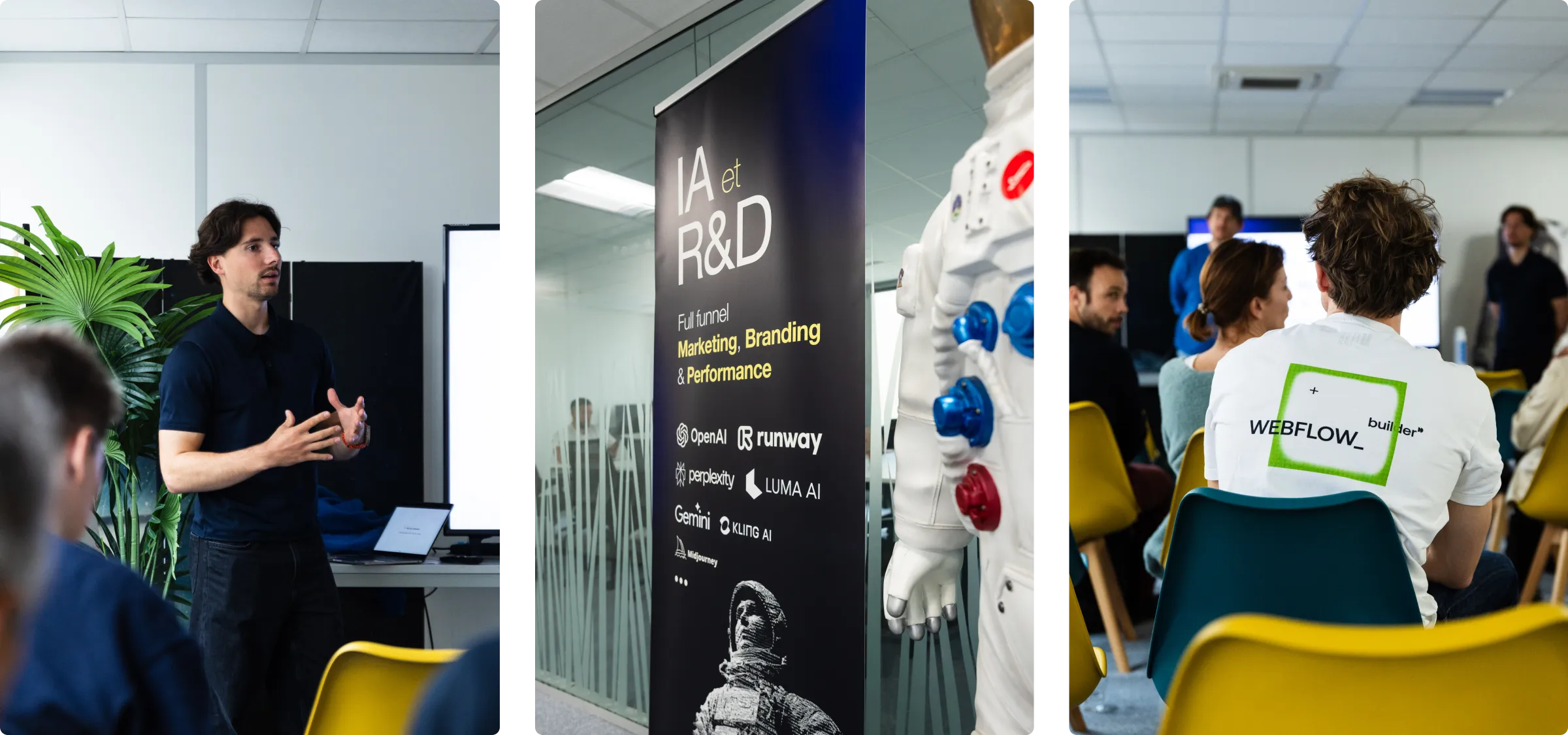
The Setup: From Zero-Click to Zero-Search
1.1 Why the paradigm is shifting
From result pages to direct answers
Historically, search engines guided users to links. Today, between enriched SERPs and AI assistants delivering answers directly, users often get what they need without visiting any site. This is the era of Zero-Click.
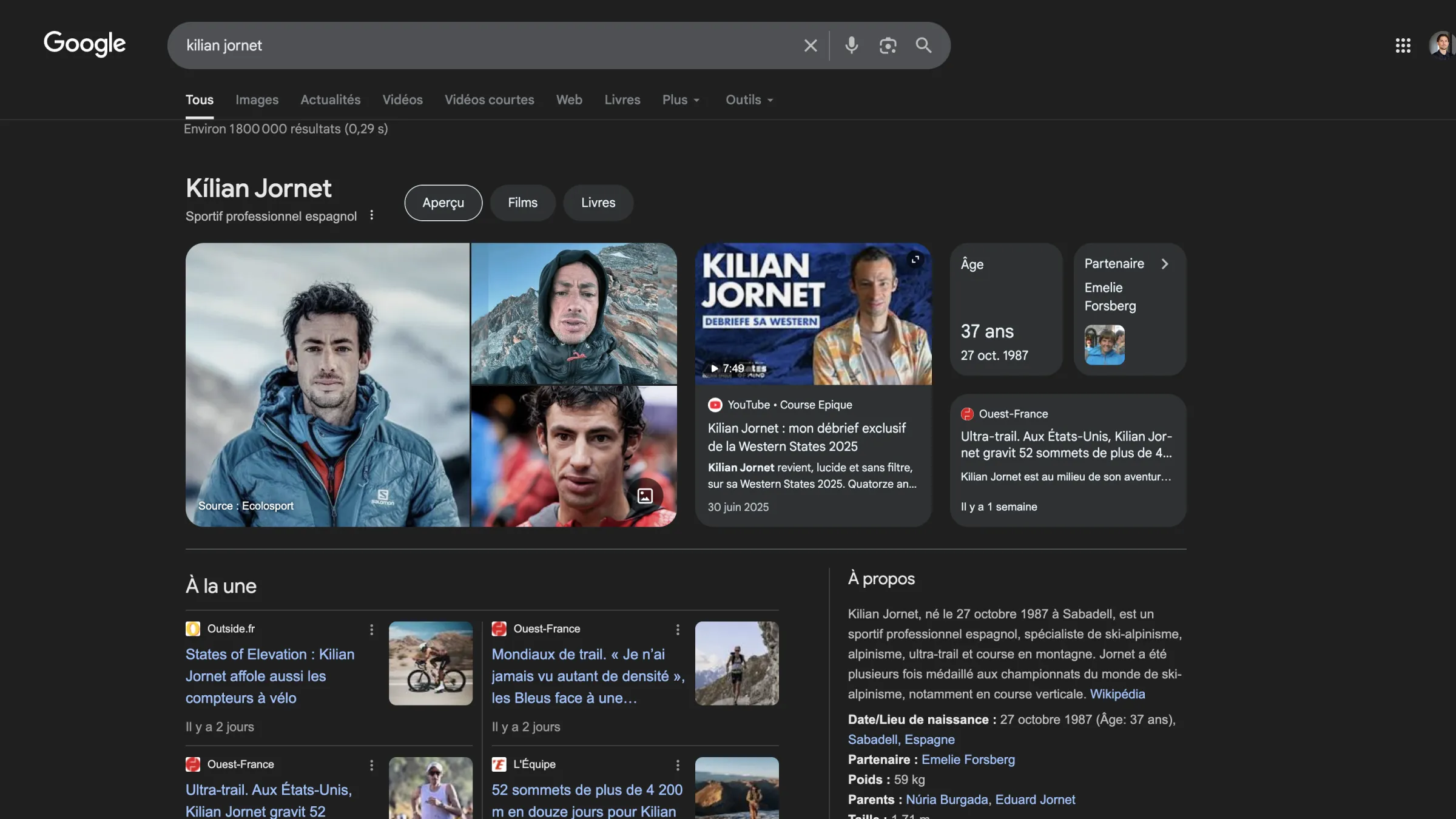
From answer to action
Next step: AI assistants not only say what to do, but actually do it—data analysis, planning, booking, payment. The user expresses intent. The agent executes. This is Zero-Search: the site is no longer a destination, but a source.
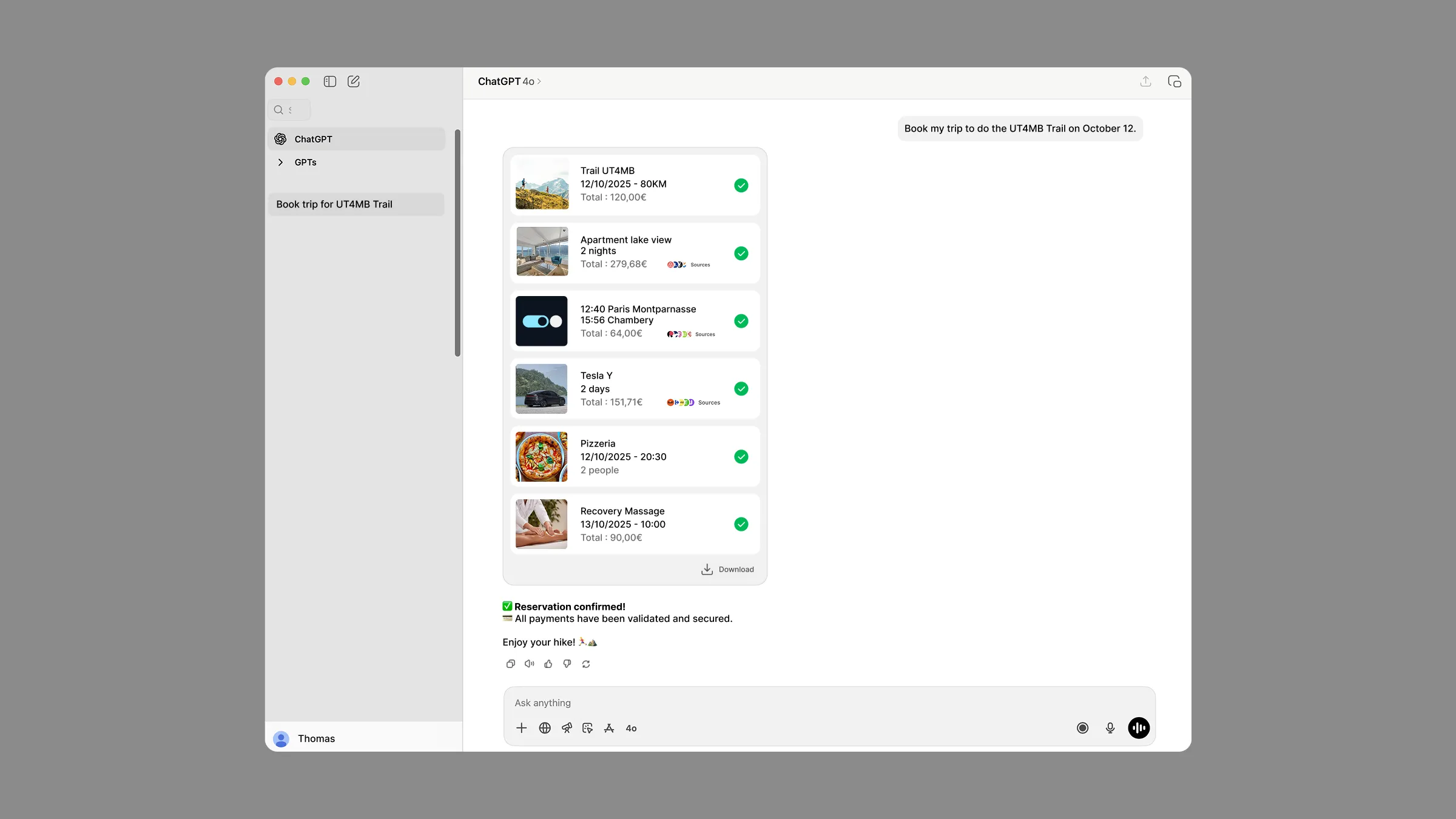
Already, we see examples:
1. In-chat purchasing via ChatGPT, powered by Stripe. Ask: “Find me running shoes under $150 for a marathon,” and complete the purchase within the chat.
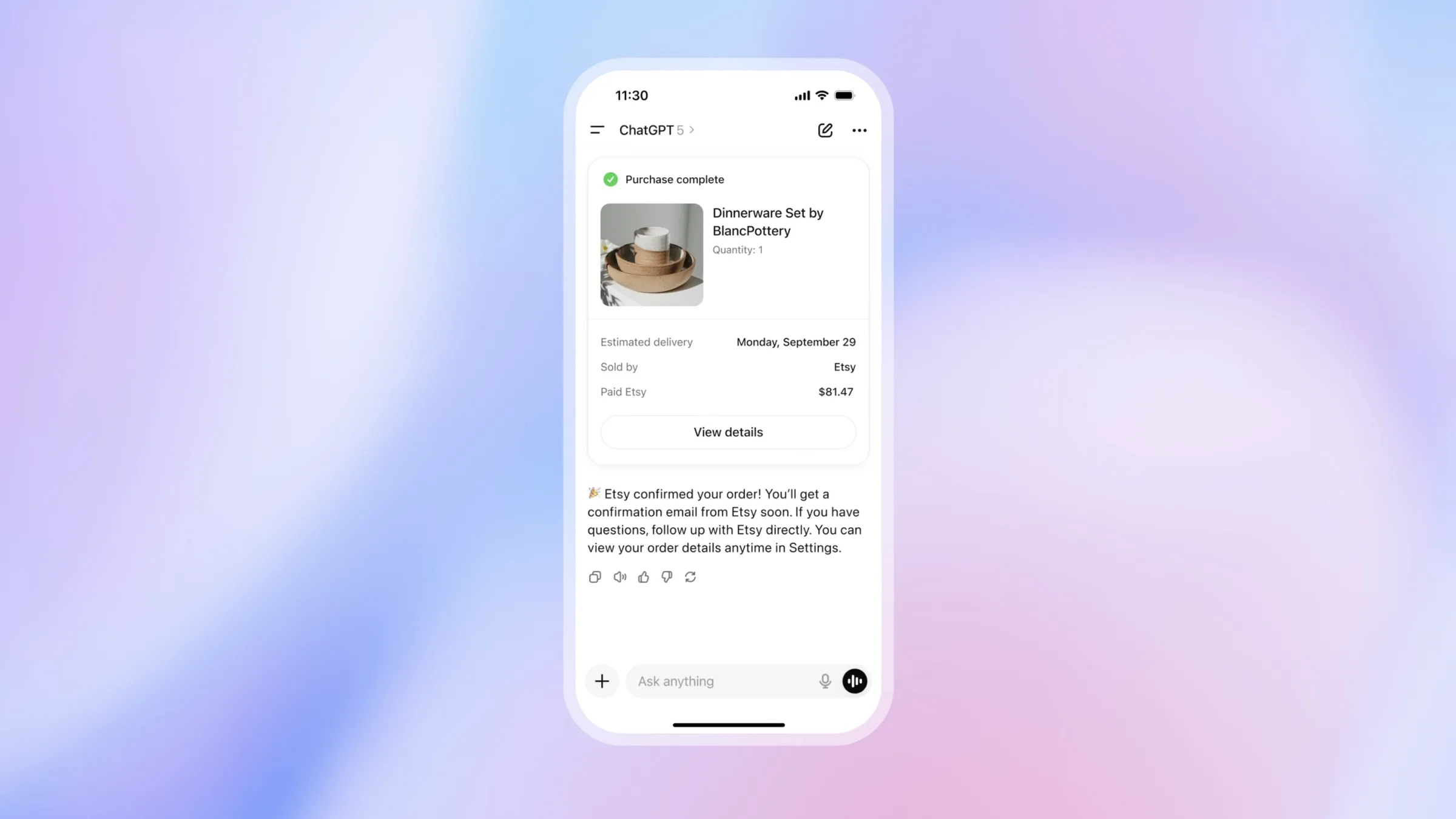
2. Operator: a new agent model trained to interact with UI elements (buttons, text fields, forms, etc.). It sees, acts, reasons, and performs tasks without needing APIs. It’s impressive. Watch it in action:
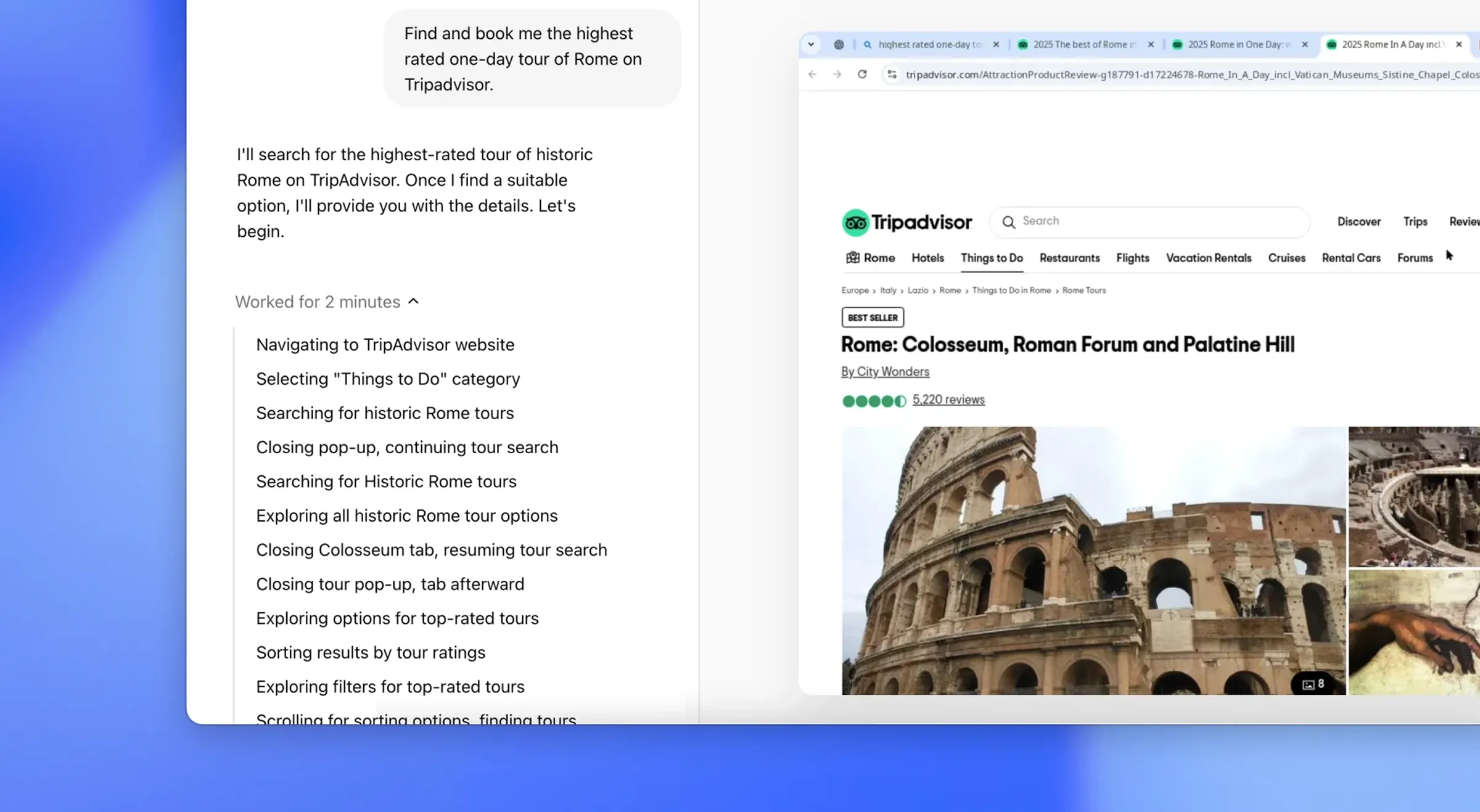
1.2 Direct Business Impacts
122.58M users/day. 2.5B+ queries/day. 5B+ visits/month.
ChatGPT's adoption is explosive. A behavioral shift that’s transforming the web:
Changing behaviors
More queries end without visiting a site. Users rely on built-in answers (Google AI Overviews, ChatGPT, voice assistants...), reducing direct brand touchpoints.
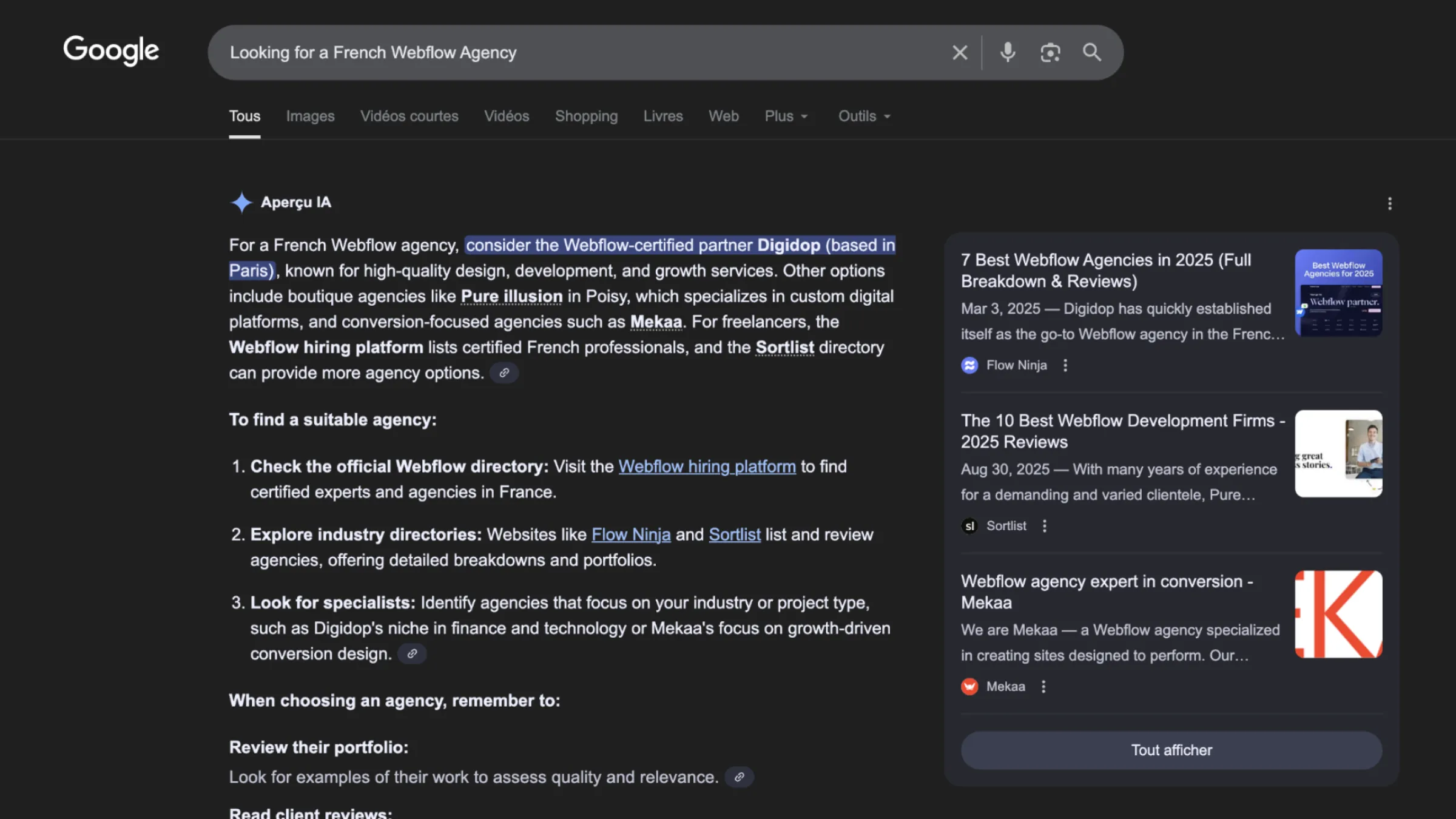
Drop in Organic Traffic and the Decline of Traditional SEO
The rules have changed. “Optimizing your SEO” has become old school in just a few months—and it’s no longer enough. Even SEO agencies are moving away from their historical positioning to adopt a new model focused on AI support and GEO (Generative Engine Optimization) / LLM SEO.
This shift is essential, because today, even with good rankings, more and more searches end without a single click.
Content now needs to be usable by agents, which completely disrupts traditional visibility strategies.
Decline in Conversion Opportunities
The math is simple: Fewer visits = fewer forms submitted, fewer newsletter signups, fewer downloads. Even if your brand is mentioned in an AI response, the user doesn’t necessarily have a reason to take it further.
👉 Our guide to optimizing your site’s conversion rate
A New Dependency on New Intermediaries
Just as we were once dependent on search engine algorithms to be well ranked, we are now dependent on LLMs to be (properly) cited. They are becoming gatekeepers of information—but with what level of reliability? And what would the cost be if an ad model gets integrated tomorrow?
Loss of Brand Control and Messaging
LLMs can summarize or rephrase your content, sometimes oversimplifying or distorting it. The accuracy and consistency of the information are no longer guaranteed, and the brand completely loses control at this level.
A real-world example: when we asked ChatGPT, “What services does the Digidop agency offer?”, here’s what came out:
- Of the 10 services highlighted, 3 were incorrect:
- “SEA Online Advertising” / “Community Management” / “Email Marketing”
- ChatGPT was able to provide detailed descriptions of our support for each of these nonexistent services.
- Among the services we actually do offer, false information was mentioned.
- All of it was delivered in a neutral tone, disconnected from our positioning or tone of voice.
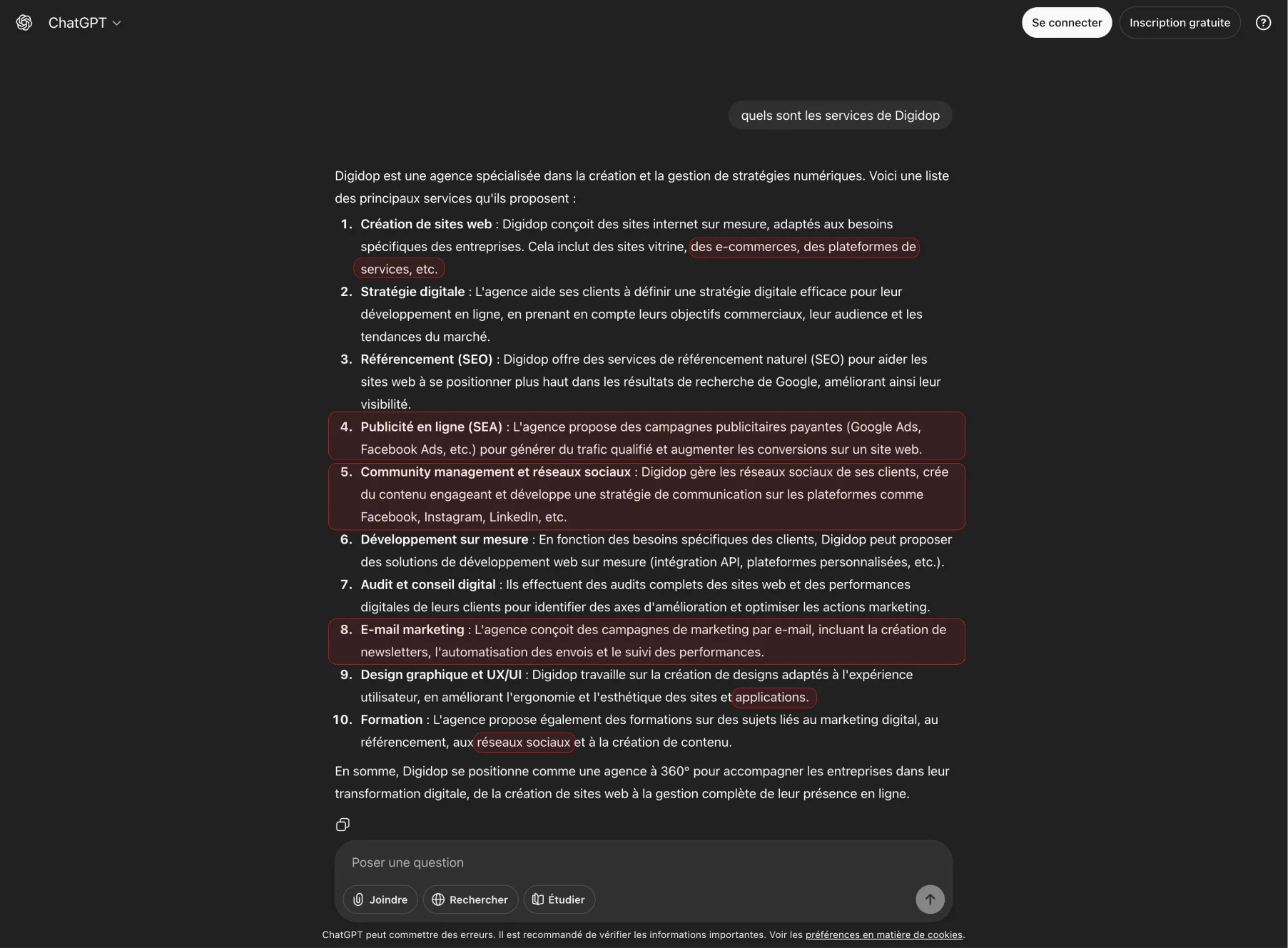
The end of "Page 1"
SEO used to be predictable—track rankings, keywords, competitor pages. Now, LLM citations rely on full conversations, model biases, and context.
Result:
- No more "Page 1"
- Ranking criteria are unpredictable
- No clear KPIs to track
- Users don’t know where info comes from
This shift means: the way we build, optimize, and manage websites must evolve.
The Reinvented Website: 4 Strategic Roles in the Age of LLMs
The website of tomorrow will need to play a different role. This is what we’ve identified through four strategic functions.
2.1 Coherence Hub
Today, your brand is reduced to fragments of stories: an Instagram story, a product sheet in a carousel, a paragraph summarized by an LLM. Taken individually, these “story fragments” no longer ensure the relevance of the narrative you’re trying to convey. Your positioning, your value proposition, the experience you aim to create—all of it becomes scattered.
As you’ve likely guessed… this is where the website has a key role to play. It’s the place that will realign your brand, your offers, and your content, reconstructing a clear, identity-driven narrative and delivering a complete experience—from first contact to action.
This topic was notably presented by Florian Bodelot on stage at FlowConf 2024. We’re sharing some of those reflections here.
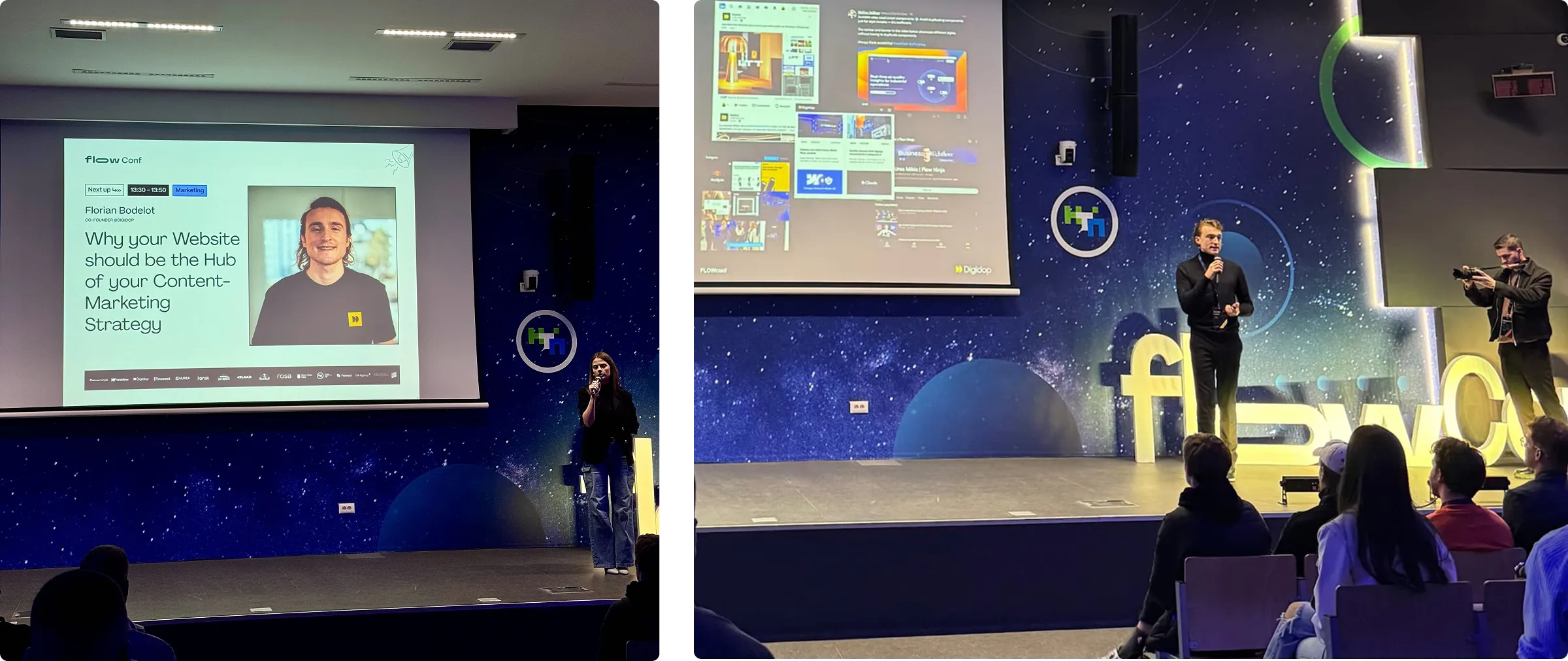
Let’s take the example of Nike.
On their social media (YouTube, Instagram, TikTok), you’ll find inspiring campaigns featuring athletes, bringing the product to life through storytelling and emotion.
.webp)
On Google, or on a shopping site, the product takes on a completely different dimension: it is put back in its place as a product. We talk about price, sizes, stock, reviews, etc.
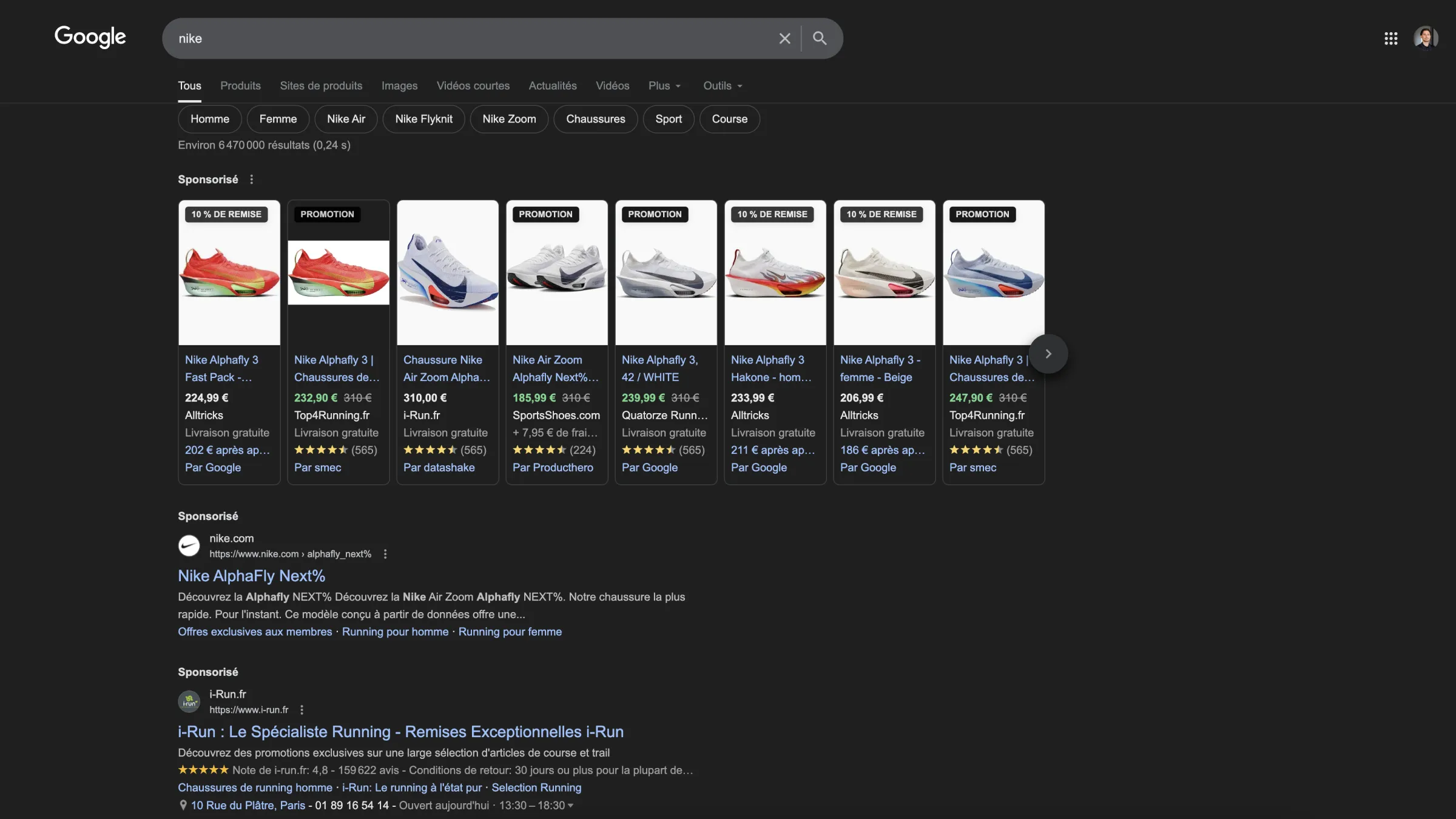
On LLMs, we get a summary of information, recommended models, use cases, and so on.
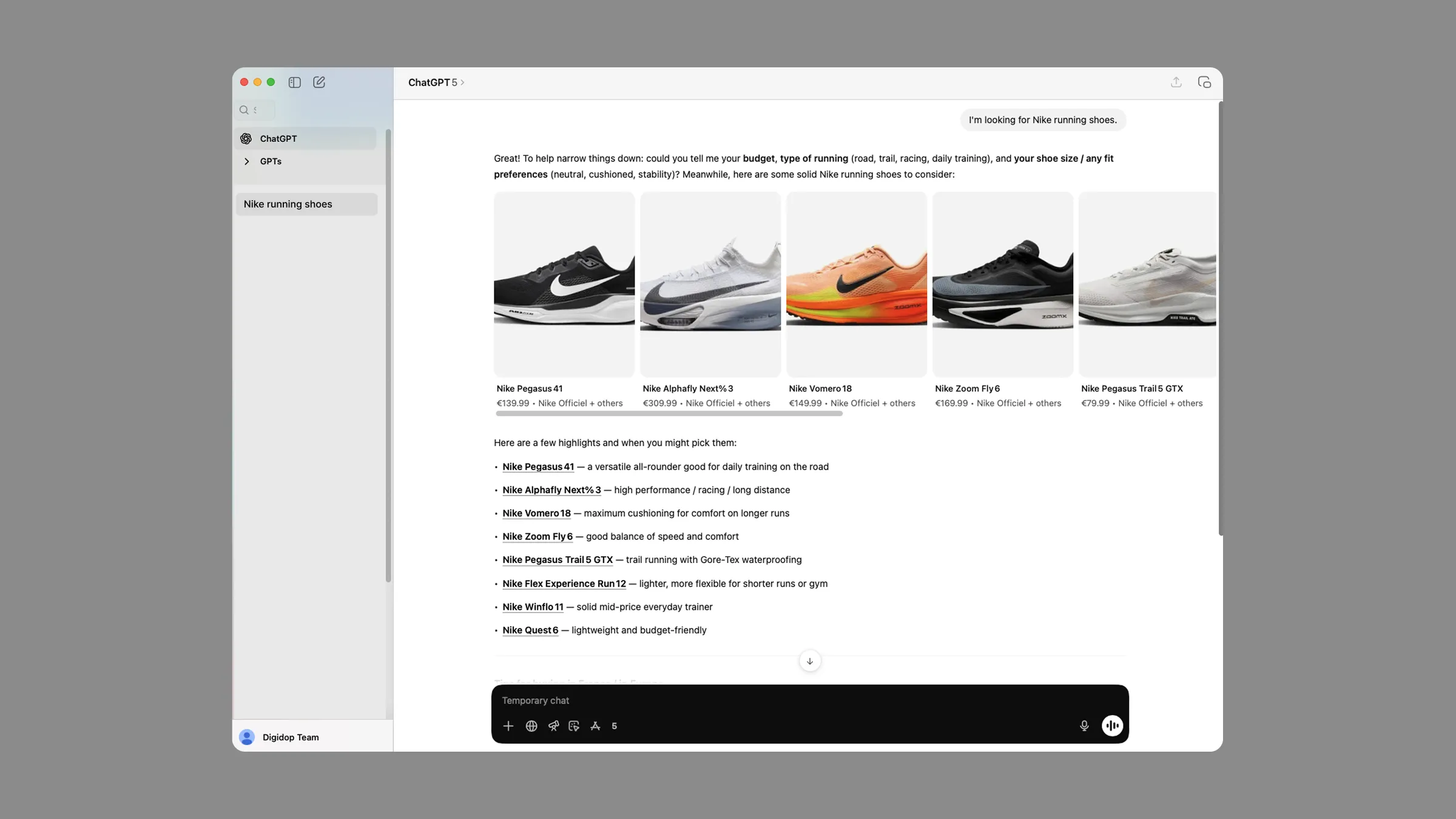
And now let’s head over to the website… the story is complete: the product is replaced by its mission (performance, style, community), with both social and technical proof, use cases, benefits, and a journey that naturally leads to purchase. This is truly where the product comes to life through experience.
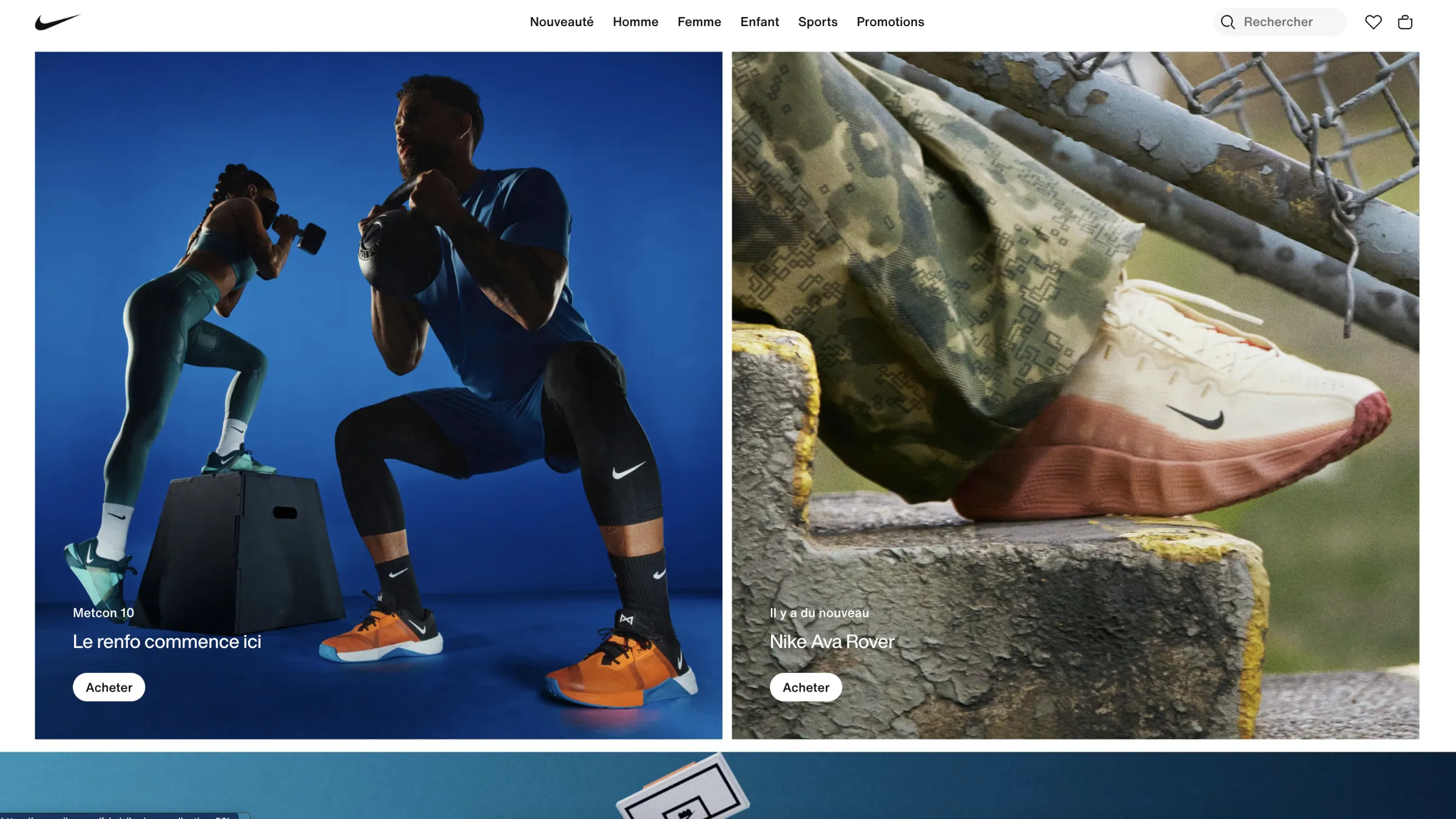
2.2 Controlled Space (Owned)
LinkedIn, Instagram, Amazon, Google, ChatGPT…
Who can guarantee that these intermediaries will still exist in five years—and especially, in the same form as today?
That’s the rule of the game: platforms set the conditions, and brands adapt. The problem is that this power can call entire strategies into question—and history has proven it.
Instagram: a minor change that reveals our dependence
We all remember when Instagram switched from square posts to portrait format. On the surface, nothing dramatic—it would “just” crop our images a bit. Some extra work (adjusting campaigns, templates), maybe a few additional costs, but no business models fundamentally challenged.
And yet, this micro-change revealed a deeper issue: our dependence on the algorithm. You might own your account, your content, your followers—but you don’t control the rules of distribution. And if Instagram decides overnight to change them… well, you simply have to adapt.
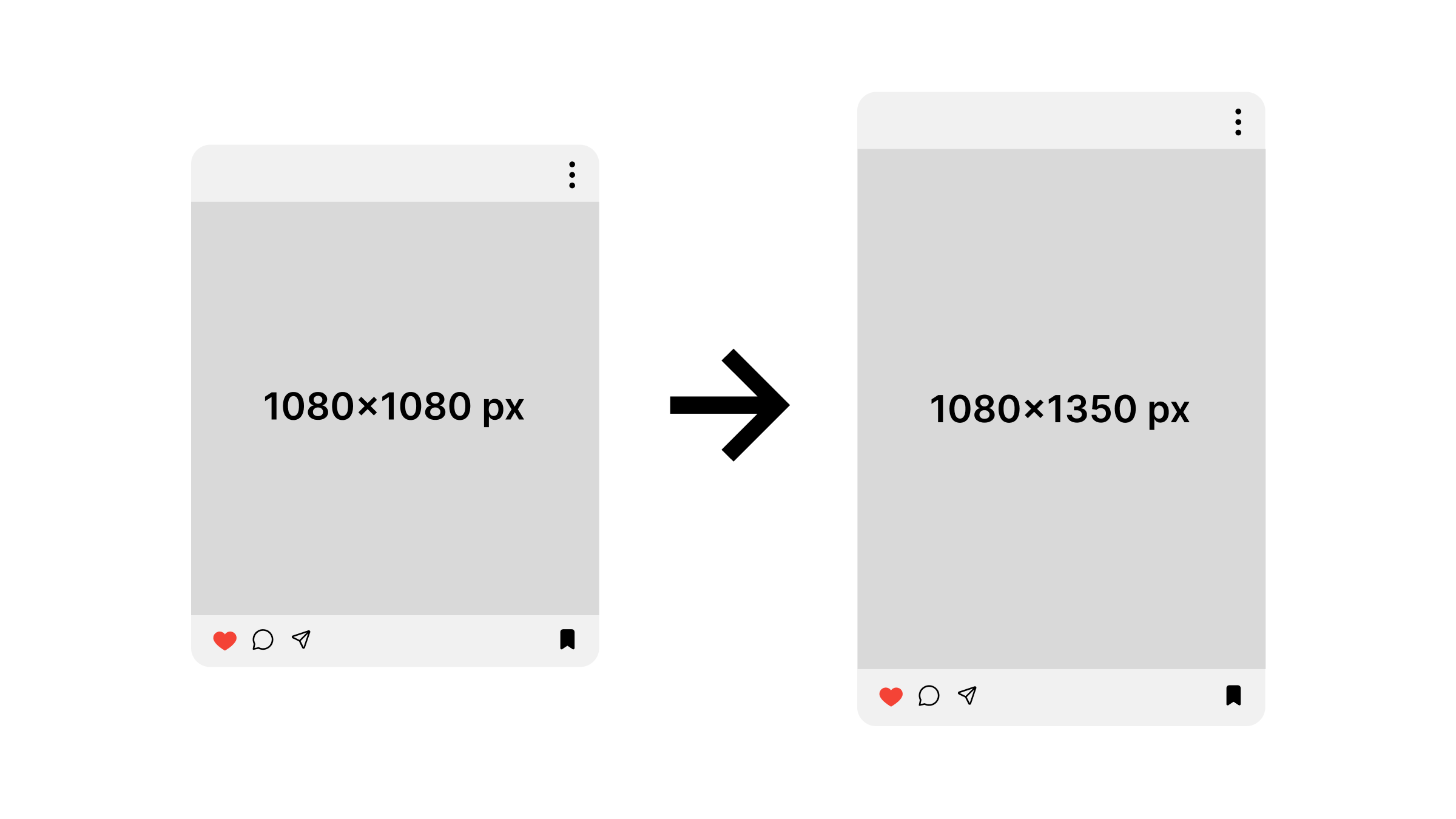
Facebook: An Algorithm Update Destroys Business Models
Let’s take the analysis further with the case of LittleThings. This American media outlet, specializing in lifestyle videos, relied almost exclusively on Facebook for its traffic. And by the way, there are quite a few media outlets in France that depend on social platforms too: Brut, Konbini, HugoDécrypte, etc.
LittleThings had more than 12 million followers and averaged 163 million monthly views. That is… until the day Facebook decided to change the rules.
Where all their content used to be pushed into users’ newsfeeds, in 2018, Facebook decided to reduce the visibility of such pages and ad-based content in favor of posts shared by friends and family.
The result: an immediate 75% drop in traffic, investors pulling out, and a sudden collapse. 120 employees lost their jobs.
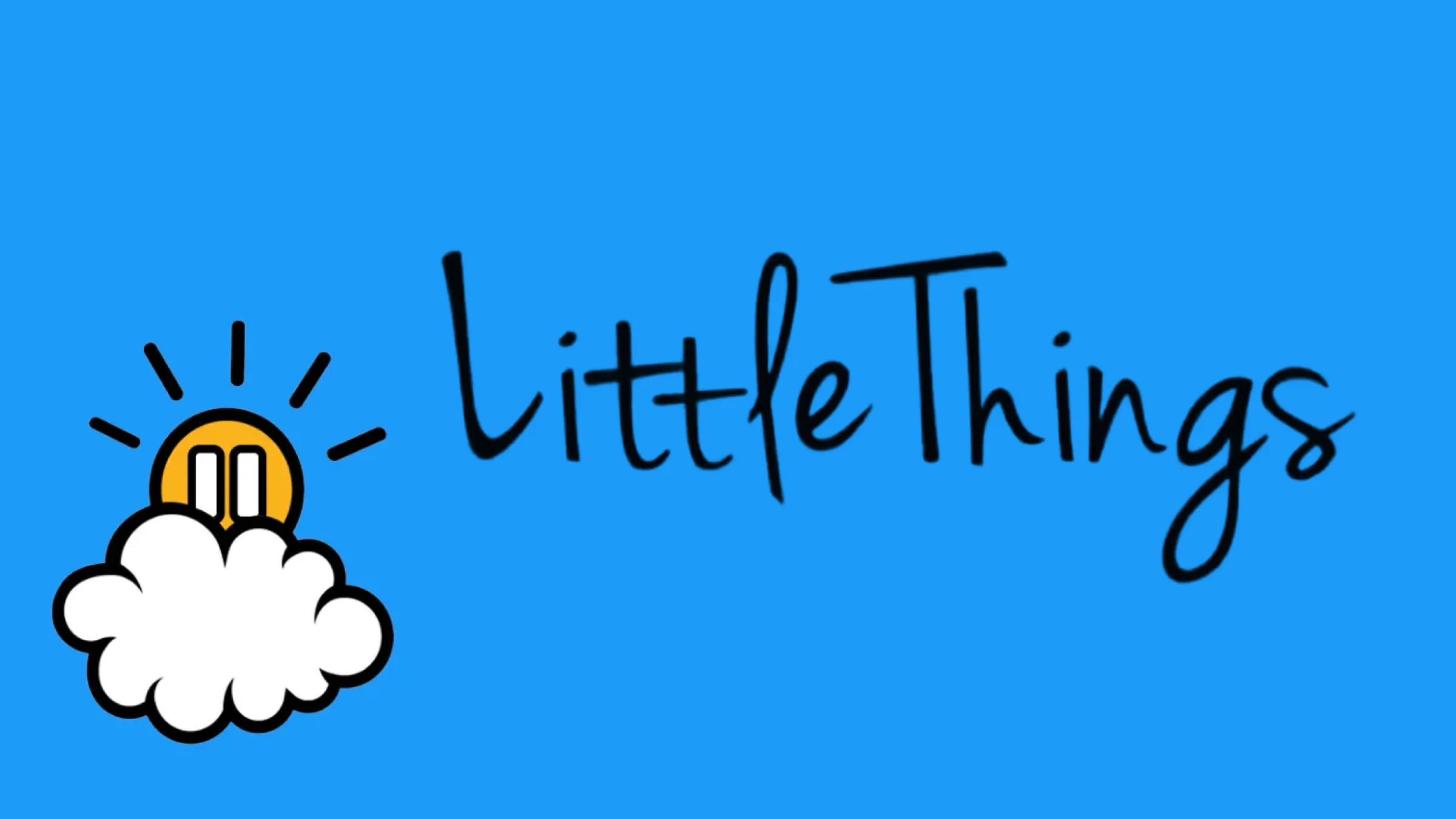
What about tomorrow, with LLMs?
What we experienced with social media is now starting to happen with LLMs. In just a few months, they’ve already redefined how visibility works: disruption of SEO rules, rise of “zero-click” answers, redistribution of organic traffic, integrated purchases.
Companies are already adapting, and agencies like Digidop are on the front line to support them with these AI-related challenges. But what happens if tomorrow:
- citation criteria change
- models start favoring certain sources over others
- they decide to integrate ads into answers (which seems to be the direction ChatGPT is taking)
It’s a never-ending process: dependency on search engines yesterday, on social networks after that, and now on LLMs.
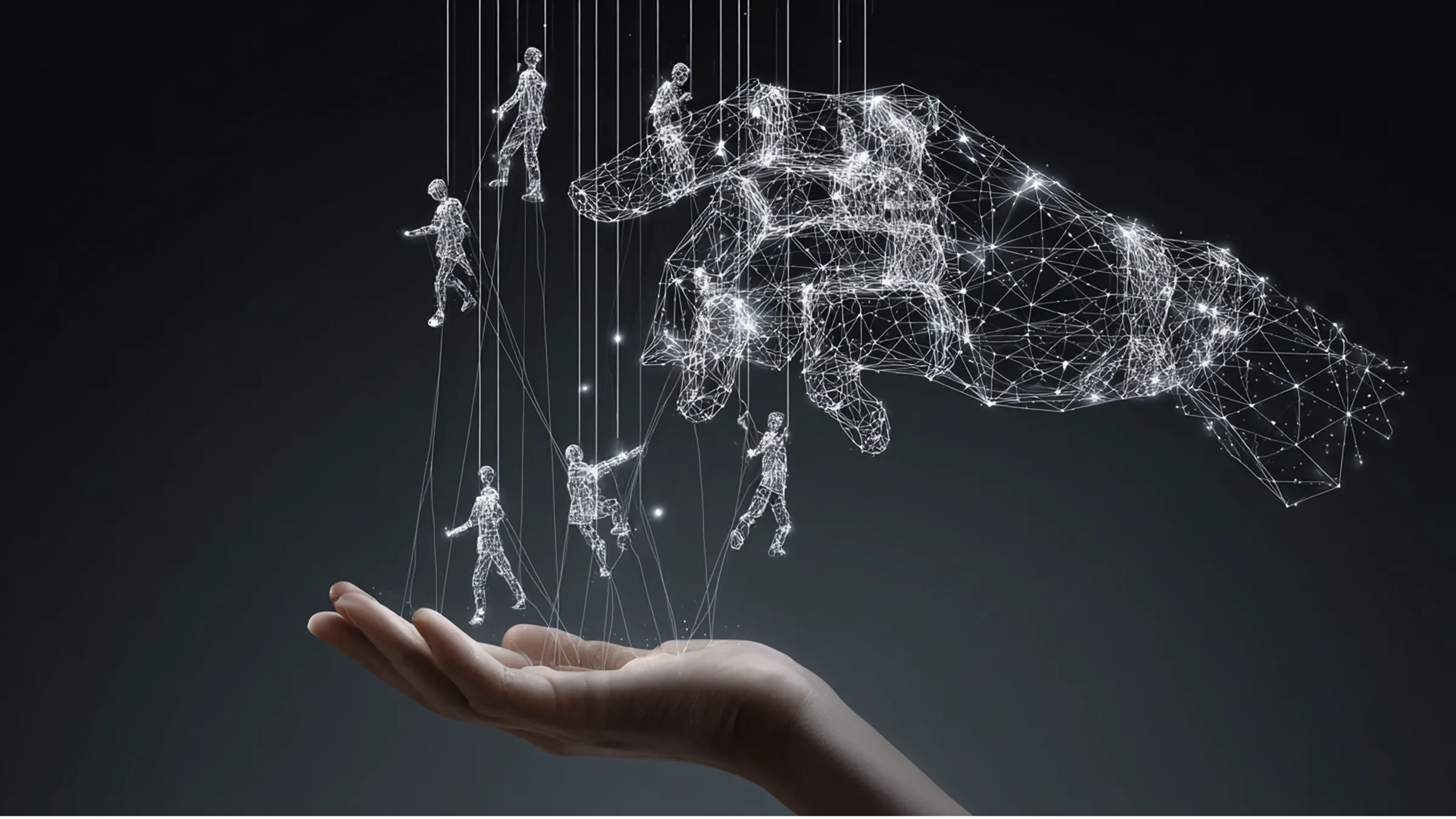
The Website as Owned Space
In this landscape, the website retains a unique characteristic: it’s the only space 100% controlled by the brand.
You decide the structure, the design, the tone, the proof points, and which information to highlight.
- You control the consistency.
- You can turn it into the official source of truth, for both humans and agents sourcing information.
This level of control makes it a strategic asset for businesses.
The website isn’t just another channel—it’s the foundation on which all other touchpoints rely.

2.3 Performance Lever
As we’ve seen, the “Zero-Click” trend is only growing stronger. It was already the case for nearly 60% of Google searches in 2024.
In this context, we can no longer think of the website as just a storefront designed for humans. It must also become a performance lever, capable of serving two audiences simultaneously:
- Humans, who come to experience it
- Machines, which come to extract information to reuse elsewhere
Providing Access to Information for LLMs
Just as we’ve done for years with SEO—through clean sitemaps, semantic markup, or schema.org—we’ll need to develop standards designed for agents in the future.
We’re already seeing the emergence of LLMs.txt files, comparable to robots.txt, though their usefulness has yet to be proven. However, structured data already used for SEO provides LLMs with a standardized data format (metadata), helping them understand, organize, and interpret web content.
Platforms like Webflow, for instance, allow you to integrate these types of features.
That said, we’re still in the early stages of this shift, and many of the technical aspects are still highly exploratory. But at Digidop, we’ve already started activating several of these levers for our clients—and we’re beginning to see measurable results.
👉 Contact one of our experts to learn more.
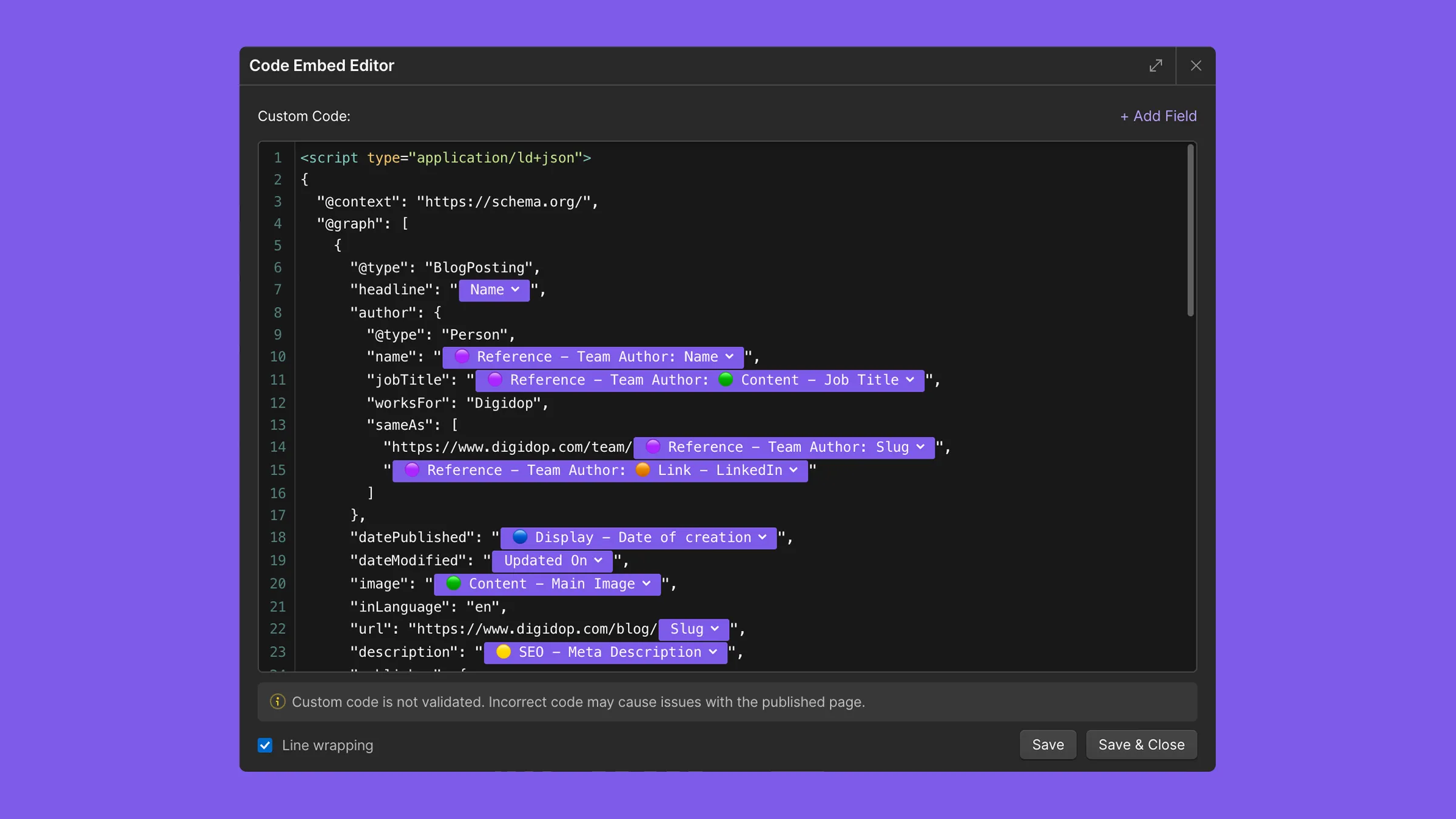
Rethinking the Experience
The role doesn’t stop at the technical level—because as behaviors evolve, interfaces must evolve too.
A particularly interesting and original example comes from the website of Parallel.ai, which offers two reading experiences:
- A “human” interface: branded, marketing-driven, with images, storytelling, and guided navigation.
- A “machine” interface: raw, almost like plain HTML, where all content can be copied and pasted into an LLM in one click.
The result: simplified access to information, maybe better usability for the models, and effective promotion of their creativity and adaptability.
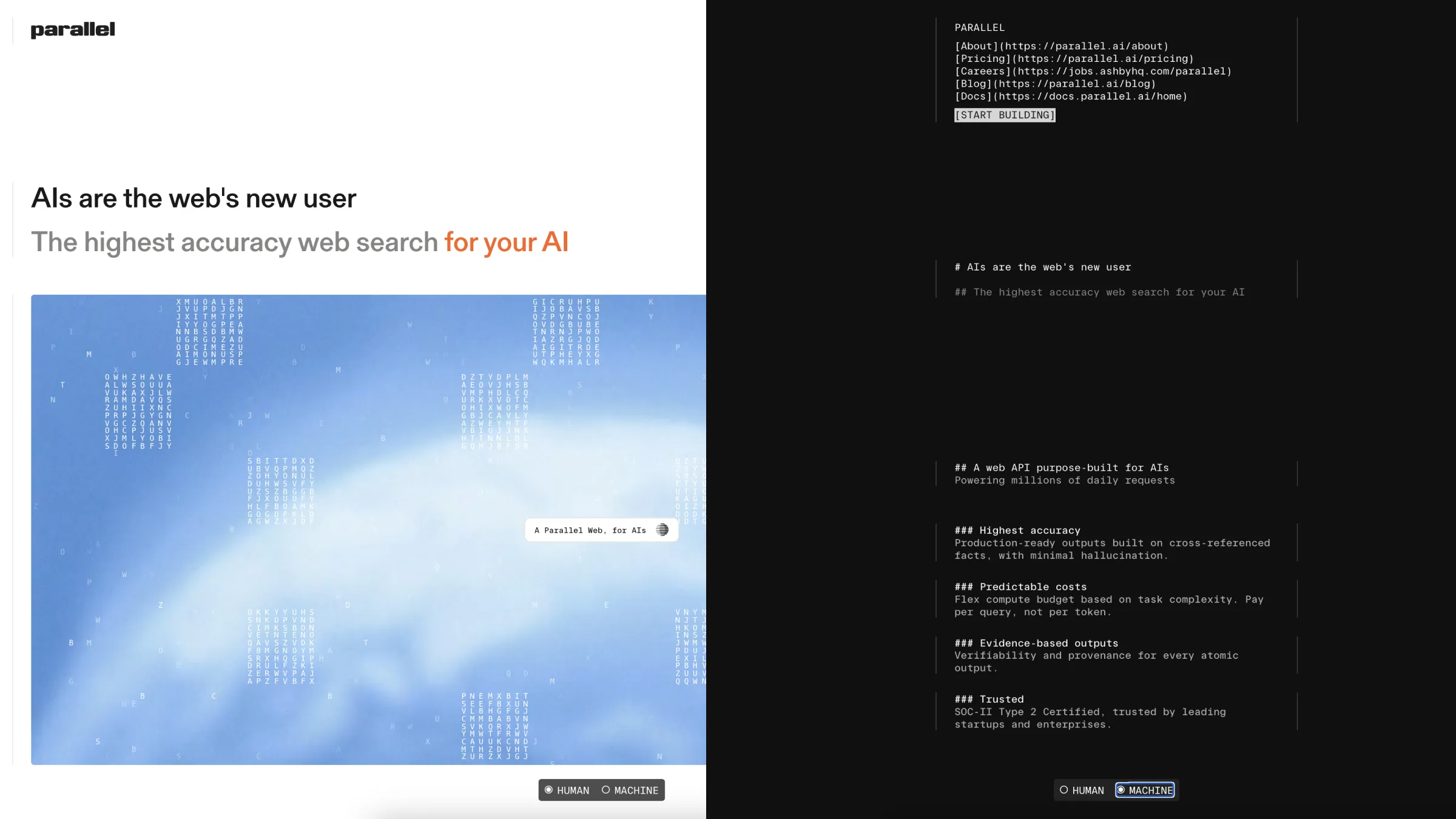
What This Changes for Brands
- Structure: just like with SEO, ensure that key content is properly tagged, clean, and accessible.
- Standardize: prepare formats readable by both search engines and AI agents.
- Measure: go beyond tracking traffic—track your presence in agents’ responses.
- Experiment: explore new hybrid interfaces between human storytelling and machine readability.
2.4 A Place for a Memorable Experience
Today, information is everywhere—but it’s summarized, copied, reused, recopied, etc.
And that’s precisely why experience matters more than ever. Every touchpoint must be memorable—and the website is the perfect place to make that happen.
Apple: The Product Becomes an Experience
Why is Apple’s website recognizable among thousands of others?
Because each product is presented as an experience: immersive visuals, smooth animations, storytelling focused on usage.
The site doesn’t just showcase a smartphone or a computer. It brings the iPhone and Mac experience to life. And that’s exactly what users are buying: an experience, not just a product. This emotional dimension—between design, interaction, and staging—is what makes a lasting impression and creates differentiation.
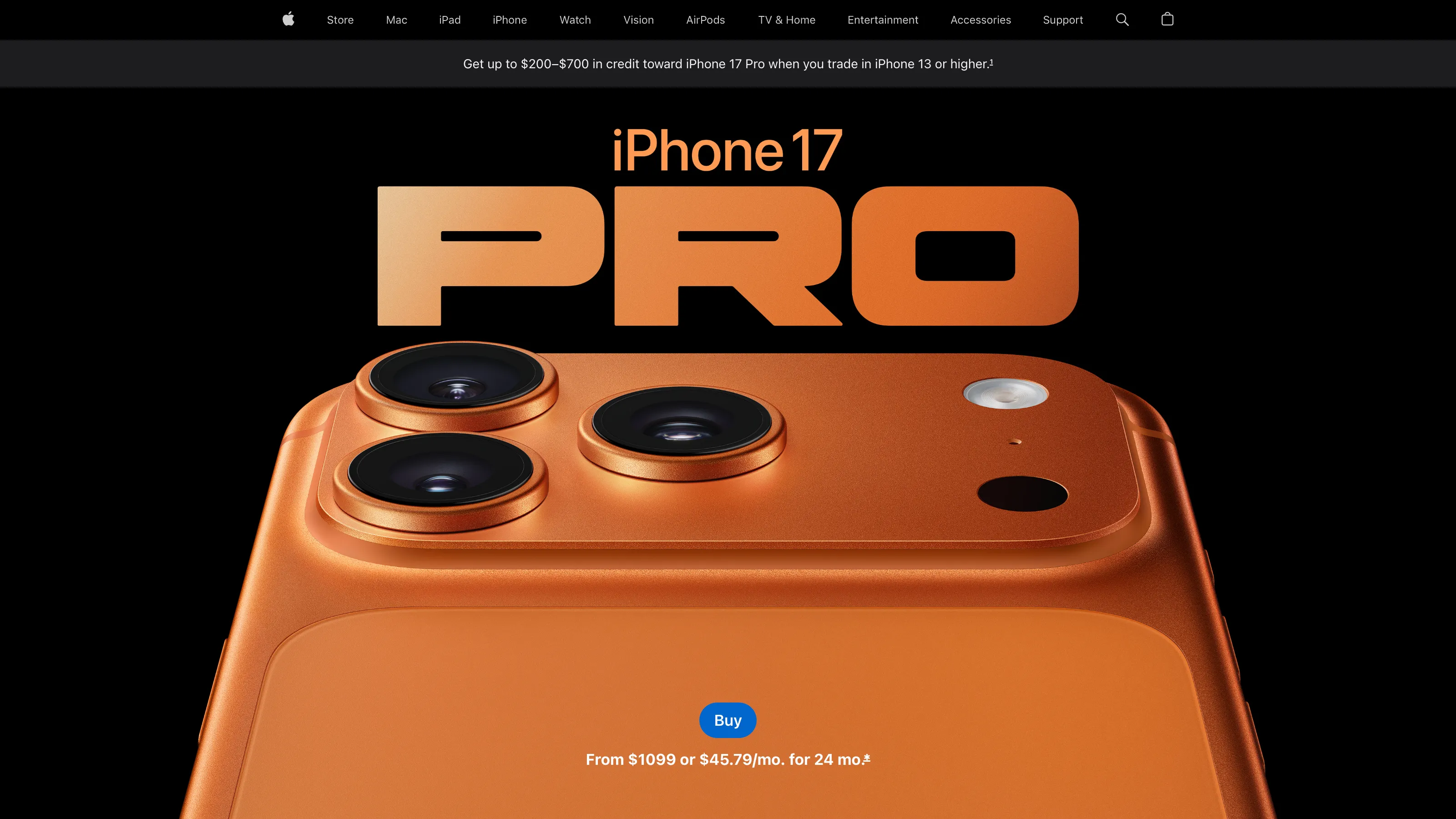
Yuri & Neil: Their Brand Becomes Their Signature
For those who don’t know them, Yuri & Neil is a digital agency specializing in acquisition and AI.
They’ve made bold choices in terms of positioning. Across all touchpoints, they offer a unique universe and approach: constellations, rockets, spacecraft, galaxies…This is reflected in the visuals, tone of voice, page selection, structure, interactions—and beyond the website, everywhere the brand is represented, you instantly know it’s them.
The experience doesn’t rely solely on the depth of their offering or content, but also on the impact of the brand, and their ability to make it recognizable and memorable.
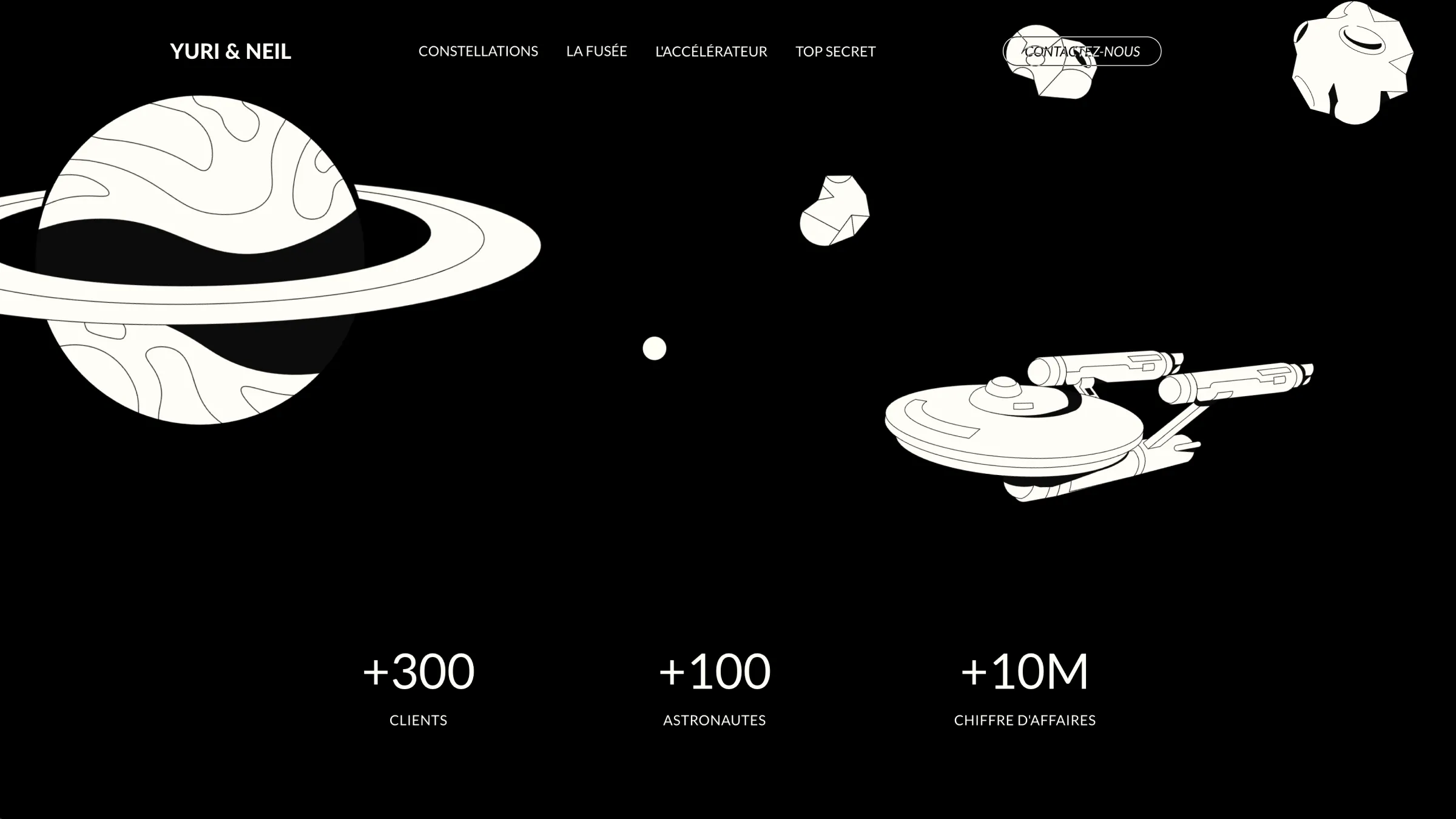
2030 Scenarios: What Could the Future Look Like?
Based on the signals we have today, let’s try to establish predictive scenarios of what websites might look like in 5 to 10 years.
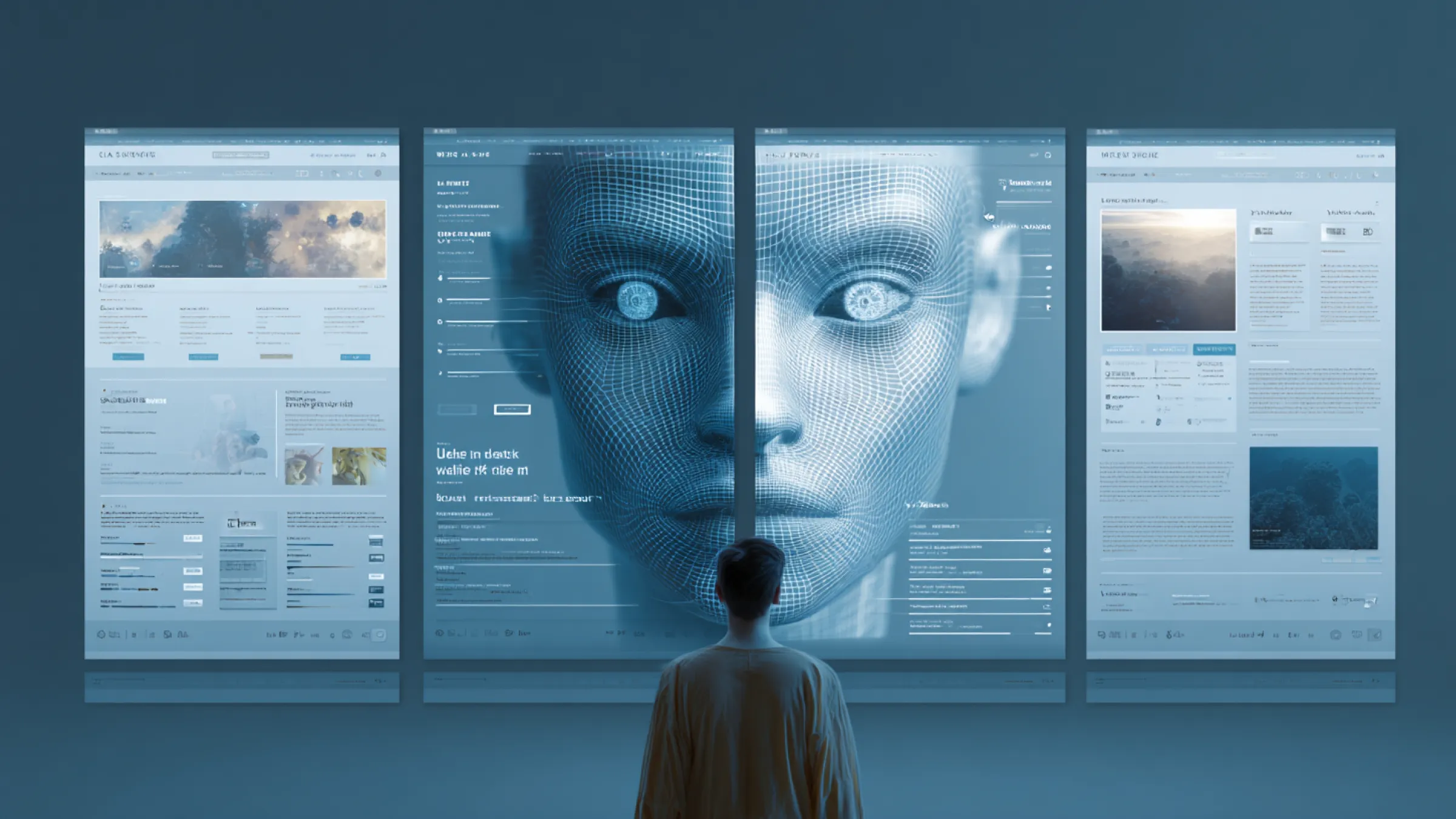
Scenario 1: “Agent-First” Web with Two Speeds
The web evolves, primarily to be understood and used by AI agents.
- Specific technical standards (similar to sitemaps or robots.txt, but enriched and designed to guide LLMs).
- Hybrid interfaces, offering both a “human” experience and a raw “machine” reading format, as we’ve already started to see with Parallel.
- New performance indicators: citation rate in AI answers, entity coverage, share of post-agent traffic.
We then see the web splitting into two:
- On one side: minimalist websites, almost like business cards, created simply to exist in the web ecosystem, without specific ambition.
- On the other: advanced Digital Experience Platforms (DXPs), personalized and tailored to specific needs—just like Netflix is for streaming or Spotify for music. These would be connected to complex data systems and offer advanced user experiences.
👉 5-year probability: 65%
The most logical and already emerging evolution.
Scenario 2: “AI-Only” Sites
Similar to Headless CMS, we might see the emergence of sites designed exclusively for AI.
- No public interface
- No design
- No animations
- Just structured, tagged, accessible content—designed to be read and understood by models.
The goal: to provide a reliable, clear, and constantly updated database to feed AI responses.
In this scenario, humans interact only with LLMs.
👉 5-year probability: 25%
A more radical but technically feasible scenario. We’re already seeing early signs (MCPs, APIs, “machine-ready” experiences), but it would require mass adoption from users.
Scenario 3: A Return to the “Real”
Less likely, but not impossible: in a context of mass regulation, or a gradual rejection of AI due to environmental, ethical, legal, or other concerns, users might return to more direct experiences.
Just like we experienced a wave of remote work followed by a return to the office, with a need for human connection.
- Preference for human-driven search, for example due to a loss of trust in AI-generated content or a need to “regain control”
- Emphasis on authentic content, verified and created by humans
- The website becomes a sought-after destination again—for its unique value and the experience it offers, as opposed to automated flows
👉 5-year probability: 15%
A counter-trend scenario. Unlikely in the short term, but could emerge in the event of a major disinformation scandal or heavy regulation that slows adoption.
Conclusion
User behaviors are evolving rapidly, and AI models are only beginning to integrate into our journeys. But one thing is clear: the website is not dead—it’s changing roles.
Tomorrow, it will no longer be just a storefront, but:
- A hub of consistency, to align brand messaging and perception
- A controlled space, where you own your information
- A performance lever, serving both humans and agents
- A place for memorable experiences, anchoring your brand in users’ minds
Looking toward 2030, multiple scenarios are possible: an agent-first web, a split ecosystem, AI-only websites, or even a return to more authentic experiences.
No matter which scenario comes true, the website will remain a strategic asset.
New form, new role—but still the digital center of gravity for the brand.
Additional Sources & Useful Links
- Rewriting the web: How to optimize websites for AI search
- How we’re optimizing for AI search at Webflow (and what we've learned so far)
- 2024 Zero-Click Search Study, by SparkToro
- ChatGPT - Market Statistics – Similarweb
- ChatGPT - Web Traffic Data – Semrush
- Exploding Topics & NerdiNav (2025 ChatGPT performance data)

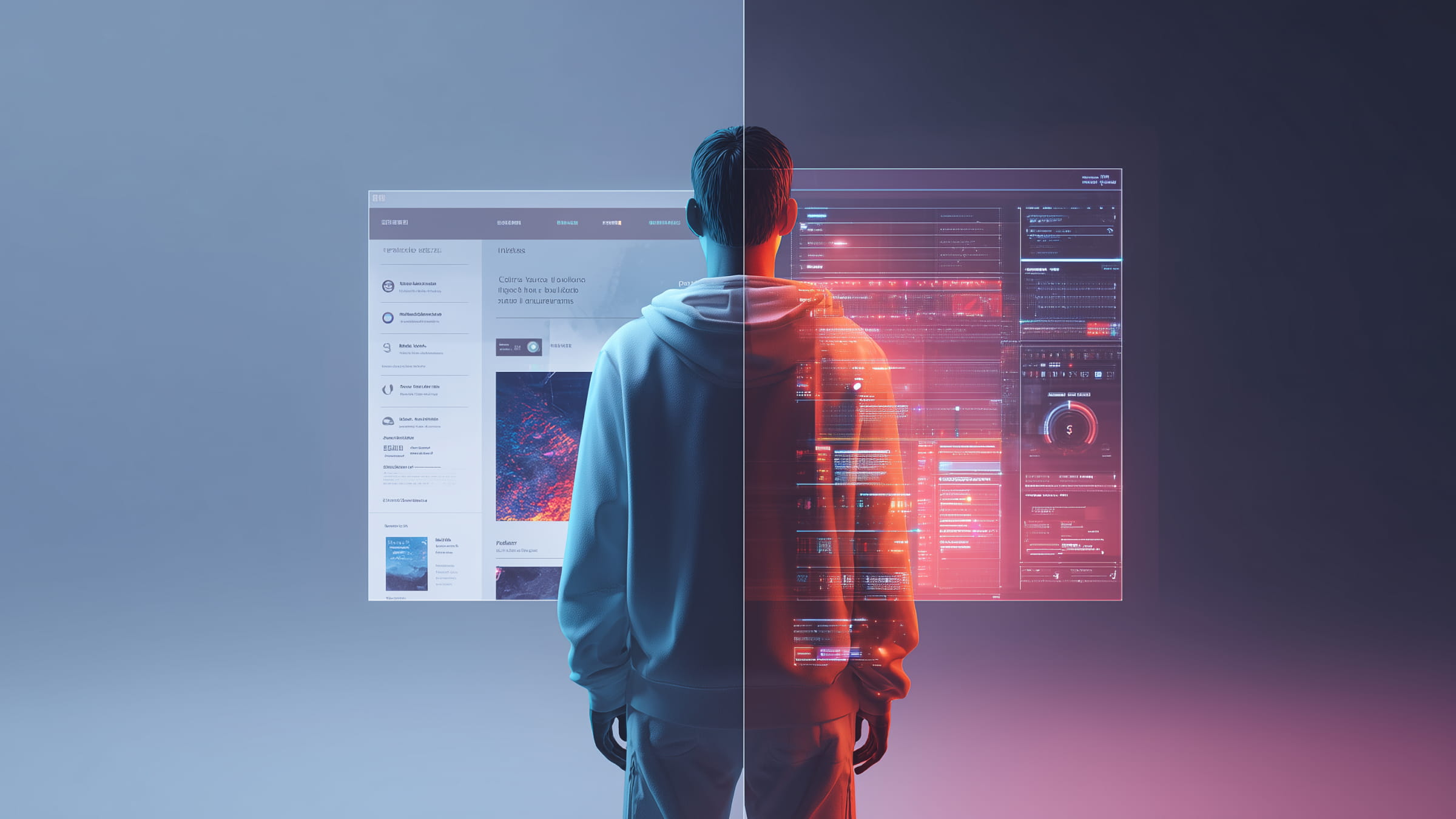
.webp)


